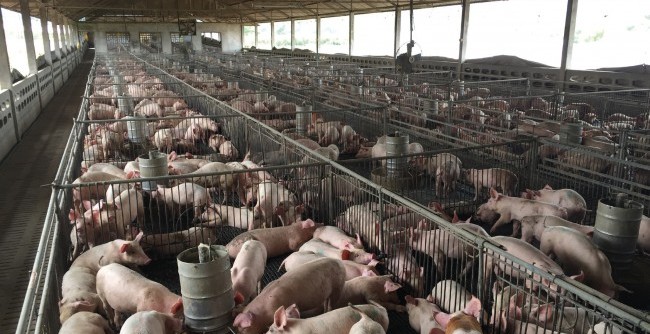US pig producers are facing a financial disaster and collective losses of $5 billion for the remainder of the year as pig prices plummet due to the the impact of COVID-19, the National Pork Producers Council has warned.
 At a press briefing, NPPC president Howard ‘AV’ Roth (pictured), a pork producer from Wisconsin, called for Government support for farming families struggling during the crisis, including a £1bn pork purchase scheme.
At a press briefing, NPPC president Howard ‘AV’ Roth (pictured), a pork producer from Wisconsin, called for Government support for farming families struggling during the crisis, including a £1bn pork purchase scheme.
“We remain committed to supplying Americans with high-quality US pork, but face a dire situation that threatens the livelihoods of thousands of farm families. We are taking on water fast. Immediate action is imperative, or a lot of hog farms will go under,” he said.
At the weekend, the world’s biggest pork processor, Smithfield, announced the temporary closure of one of its biggest plants, at Sioux Falls, in South Dakota, representing an estimated 4-5% of US pork production. This was after 238 employees had active cases of COVID-19.
The move followed other significant plant closures across the US, prompting Smithfield chief executive Ken Sullivan to warn that the US is moving ‘perilously close to the edge’ in terms of meat supply.
The NPPC said the suspension of pork packing plant operations and rising employee absenteeism due to COVID-19 has exacerbated an existing harvest (processing) facility capacity challenge due to a labour shortage in rural America.
This limited capacity has created a surplus of pigs, causing values to plunge, while the loss of the food services market and the COVID-related slowdown in most export markets has ‘crashed demand and overwhelmed the cold storage of meat’.
Dr Dermot Hayes, an economist with Iowa State University, and Dr Steve Meyer, a pork industry economist with Kerns & Associates, estimate that US pig farmers will lose nearly $37 per pig marketed for the rest of the year, or almost $5 billion collectively.
Prior to the COVID-19 crisis, and after two challenging years, pig farmers were generally expecting a profitable year, with industry analysts forecasting earnings of approximately $10 per pig on average for 2020.
Mr Roth added, “The pork industry is based on a just-in-time inventory system. Hogs are backing up on farms with nowhere to go, leaving farmers with tragic choices to make. Dairy producers can dump milk. Fruit and vegetable growers can dump produce. But, hog farmers have nowhere to move their hogs.”
NPPC, in consultation with hog farmers across the nation, has identified several measures it has raised with federal policy makers, including:
- Over $1 billion in pork purchases by the USDA to clear out a backed-up meat supply, supplementing agency food bank programs facing increased demand due to rising unemployment. These purchases should accommodate pork products packaged for restaurants and other segments of the food services market.
- Equitable direct payments to producers participants without eligibility restrictions.
- A legislative fix to emergency loan programs that have left farmers behind. Approximately 10,000 family hog farms are in jeopardy because they do not have access to much-needed capital offered by the Small Business Administration. NPPC is urging Congress to increase the cap on qualifying businesses to those that employee up to 1,500 and to make agricultural businesses eligible for the Economic Injury Disaster Loan program.




